PHD STUDENTSHIP IN QUANTUM MATTERWAVE OPTICS (NANOLACE)
=============
. The Project .
=============
Recent advances in our ability to generate and manipulate quantum-coherent matterwaves is now ushering in a new era of quantum optics, where the roles of matter and light are almost exactly reversed. We are starting to be able to create almost arbitrary matterwave-images, (de)magnify, and project them. Matterwave mirrors, lenses and cavities are rapidly becoming reality. We have recently even been able to demonstrate a coherent waveguide for matterwaves.
In the nanoLace project, we are going to build a novel type of matterwave lithography experiment, where we will exploit the fact that time-dependent matterwave lenses will enable us to reduce the wavelength of matterwaves by orders of magnitude. We expect to be able to generate arbitrary patterns as small as a few nanometres. Potential applications stretch from the fundamental (quantum-matterwave-optics) to the industrial (micro-chip production with nanometric structures). To this end we are now in the process of setting up a novel matterwave lithography machine based on Bose-Einstein Condensates. The project is fully financed in the framework of the EU Future and Emerging Technologies (FET) network nanoLace.
======================================
. The Scientific Objectives (of the PhD project) .
======================================
Common to all projects is that the students will take part in a larger team, which will design and construct a new BEC experiment. The new BEC machine will be largely based on our existing two experiments and will share much of its infrastructure (cooling, laser-light, electronic control). Very interesting design choices will have to be taken based on ongoing theoretical calculations and numerical simulations.
-----------------------
PhD Project 1) (im)perfect Matterwave Lenses: It is well known from classical imaging that parabolic lenses can provide a perfect point-to-point image. These lenses are well-known to matterwaves as harmonic traps. Compared to optical lenses they have the great advantage of being perfectly smooth (with roughness amplitudes well below the angstrom scale). However, Maxwell’s equations put some constraints in terms of aspect ratio and shape, which in turn leads to aberrations in the imaging system. Another interesting aspect is the interaction of nano-metric matterwave images with surfaces.
-----------------------
PhD Project 2) non-linear effects in quantum matter-wave imaging: Matterwaves differ from optical waves in that they interact even in the absence of an external medium. On one hand this gives rise to limitations linking the final resolution and the maximum atom-density that can be achieved. On the other hand this will give rise to very interesting transient non-linear quantum effects, which can be exploited for example in number-squeezing experiments.
======================
. The Research Group .
======================
The Cretan Matter Waves Group (BEC.gr) is located in Greece on the beautiful island of Crete. It is part of IESL-FORTH, which is the top research institute for experimental physics in Greece. IESL-FORTH is focused on various topics in laser physics ranging from atto-second laser pulses to state of the art multi-photon polymerization nano-scale laser 3D printing and meta-materials and quantum-cavity electrodynamics experiments.
The Cretan Matter Waves Group is currently the leading the efforts in ultra-cold atoms in South-Eastern Europe. It is specialised in all aspects of matterwave optics, ranging from (space-based) matterwave interferometry, to the brightest atom laser [1], and the first demonstration of coherent matterwave guides [2]
==============
. The Positions .
==============
The PhD students will perform their research at IESL-FORTH and be enrolled in the University of Crete. They will receive training from the experienced matterwave group at IESL. At the start they attend one or two dedicated summer schools (Les Houches, FOMO etc) and later on attend one or two international conference per year. Additional skills training (IPR, language etc.). Optional internships in other research groups and major high-tech companies are possible. The salary ranges between 850EU and 1200EU net, depending e.g. on country of origin.
For more info on training and background see here.
======================
. Deadline for applications .
======================
The deadline for the first round of applications is Sept 15, 2020. The position will remain open until filled. The envisaged starting date is anytime after the deadline
[1] Bolpasi et al. An ultra-bright atom laser
New Journal of Physics 16: 033036 (2014) doi:10.1088/1367-2630/16/3/033036
[2] Pandey et al. Hypersonic Bose–Einstein condensates in accelerator rings.
Nature 570, 205–209 (2019). doi:10.1038/s41586-019-1273-5
